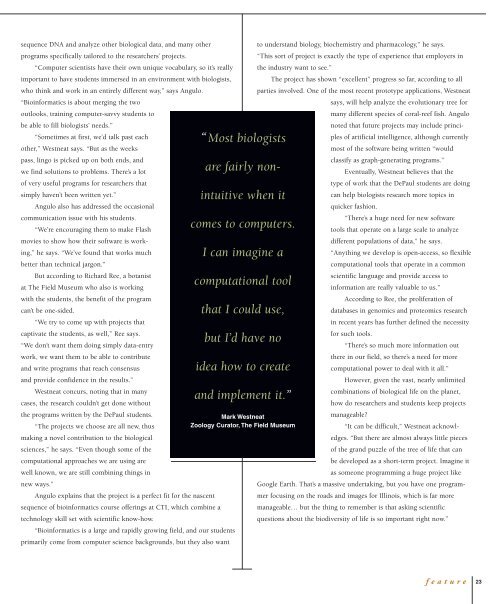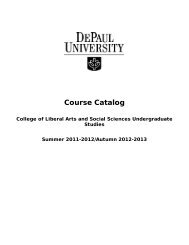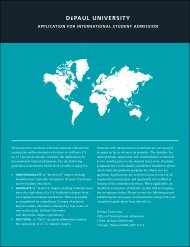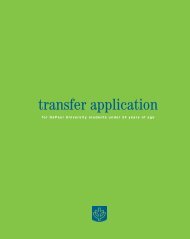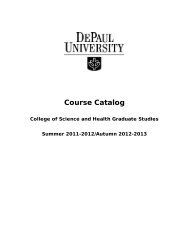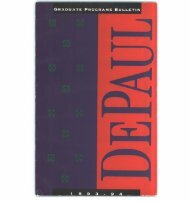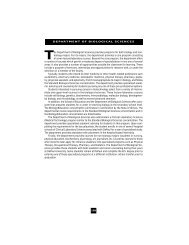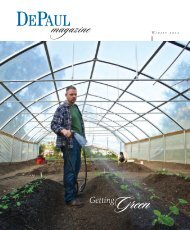You also want an ePaper? Increase the reach of your titles
YUMPU automatically turns print PDFs into web optimized ePapers that Google loves.
sequence DNA and analyze other biological data, and many other<br />
programs specifically tailored to the researchers’ projects.<br />
“Computer scientists have their own unique vocabulary, so it’s really<br />
important to have students immersed in an environment with biologists,<br />
who think and work in an entirely different way,” says Angulo.<br />
“Bioinformatics is about merging the two<br />
outlooks, training computer-savvy students to<br />
be able to fill biologists’ needs.”<br />
“Sometimes at first, we’d talk past each<br />
other,” Westneat says. “But as the weeks<br />
pass, lingo is picked up on both ends, and<br />
we find solutions to problems. There’s a lot<br />
of very useful programs for researchers that<br />
simply haven’t been written yet.”<br />
Angulo also has addressed the occasional<br />
communication issue with his students.<br />
“We’re encouraging them to make Flash<br />
movies to show how their software is working,”<br />
he says. “We’ve found that works much<br />
better than technical jargon.”<br />
But according to Richard Ree, a botanist<br />
at The Field Museum who also is working<br />
with the students, the benefit of the program<br />
can’t be one-sided.<br />
“We try to come up with projects that<br />
captivate the students, as well,” Ree says.<br />
“We don’t want them doing simply data-entry<br />
work, we want them to be able to contribute<br />
and write programs that reach consensus<br />
and provide confidence in the results.”<br />
Westneat concurs, noting that in many<br />
cases, the research couldn’t get done without<br />
the programs written by the <strong>DePaul</strong> students.<br />
“The projects we choose are all new, thus<br />
making a novel contribution to the biological<br />
sciences,” he says. “Even though some of the<br />
computational approaches we are using are<br />
well known, we are still combining things in<br />
new ways.”<br />
Angulo explains that the project is a perfect fit for the nascent<br />
sequence of bioinformatics course offerings at CTI, which combine a<br />
technology skill set with scientific know-how.<br />
“Bioinformatics is a large and rapidly growing field, and our students<br />
primarily come from computer science backgrounds, but they also want<br />
“ Most biologists<br />
are fairly nonintuitive<br />
when it<br />
to understand biology, biochemistry and pharmacology,” he says.<br />
“This sort of project is exactly the type of experience that employers in<br />
the industry want to see.”<br />
comes to computers.<br />
I can imagine a<br />
computational tool<br />
that I could use,<br />
but I’d have no<br />
idea how to create<br />
and implement it.”<br />
Mark Westneat<br />
Zoology Curator, The Field Museum<br />
The project has shown “excellent” progress so far, according to all<br />
parties involved. One of the most recent prototype applications, Westneat<br />
says, will help analyze the evolutionary tree for<br />
many different species of coral-reef fish. Angulo<br />
noted that future projects may include principles<br />
of artificial intelligence, although currently<br />
most of the software being written “would<br />
classify as graph-generating programs.”<br />
Eventually, Westneat believes that the<br />
type of work that the <strong>DePaul</strong> students are doing<br />
can help biologists research more topics in<br />
quicker fashion.<br />
“There’s a huge need for new software<br />
tools that operate on a large scale to analyze<br />
different populations of data,” he says.<br />
“Anything we develop is open-access, so flexible<br />
computational tools that operate in a common<br />
scientific language and provide access to<br />
information are really valuable to us.”<br />
According to Ree, the proliferation of<br />
databases in genomics and proteomics research<br />
in recent years has further defined the necessity<br />
for such tools.<br />
“There’s so much more information out<br />
there in our field, so there’s a need for more<br />
computational power to deal with it all.”<br />
However, given the vast, nearly unlimited<br />
combinations of biological life on the planet,<br />
how do researchers and students keep projects<br />
manageable?<br />
“It can be difficult,” Westneat acknowledges.<br />
“But there are almost always little pieces<br />
of the grand puzzle of the tree of life that can<br />
be developed as a short-term project. Imagine it<br />
as someone programming a huge project like<br />
Google Earth. That’s a massive undertaking, but you have one programmer<br />
focusing on the roads and images for Illinois, which is far more<br />
manageable… but the thing to remember is that asking scientific<br />
questions about the biodiversity of life is so important right now.”<br />
f e a t u r e<br />
23


